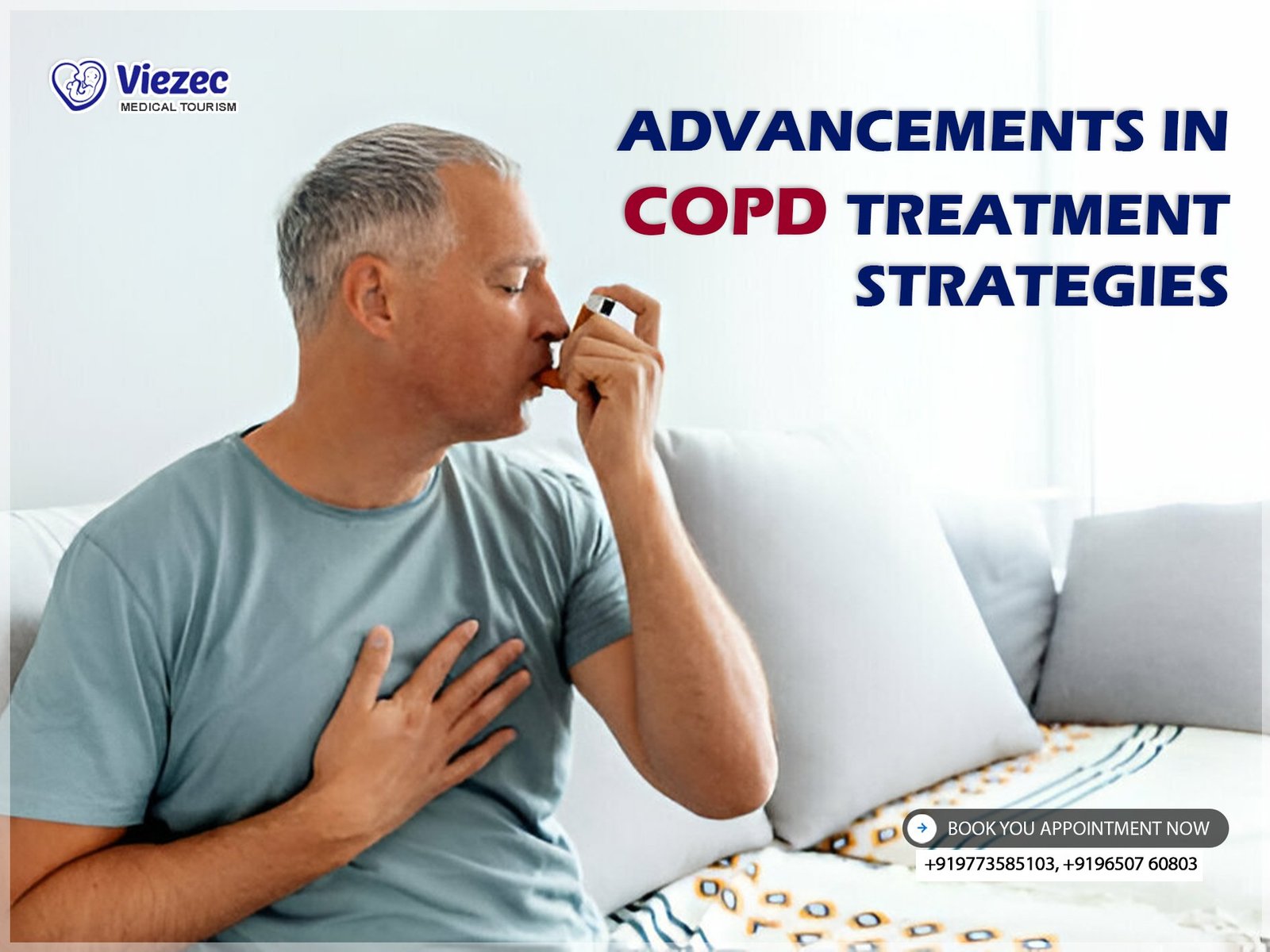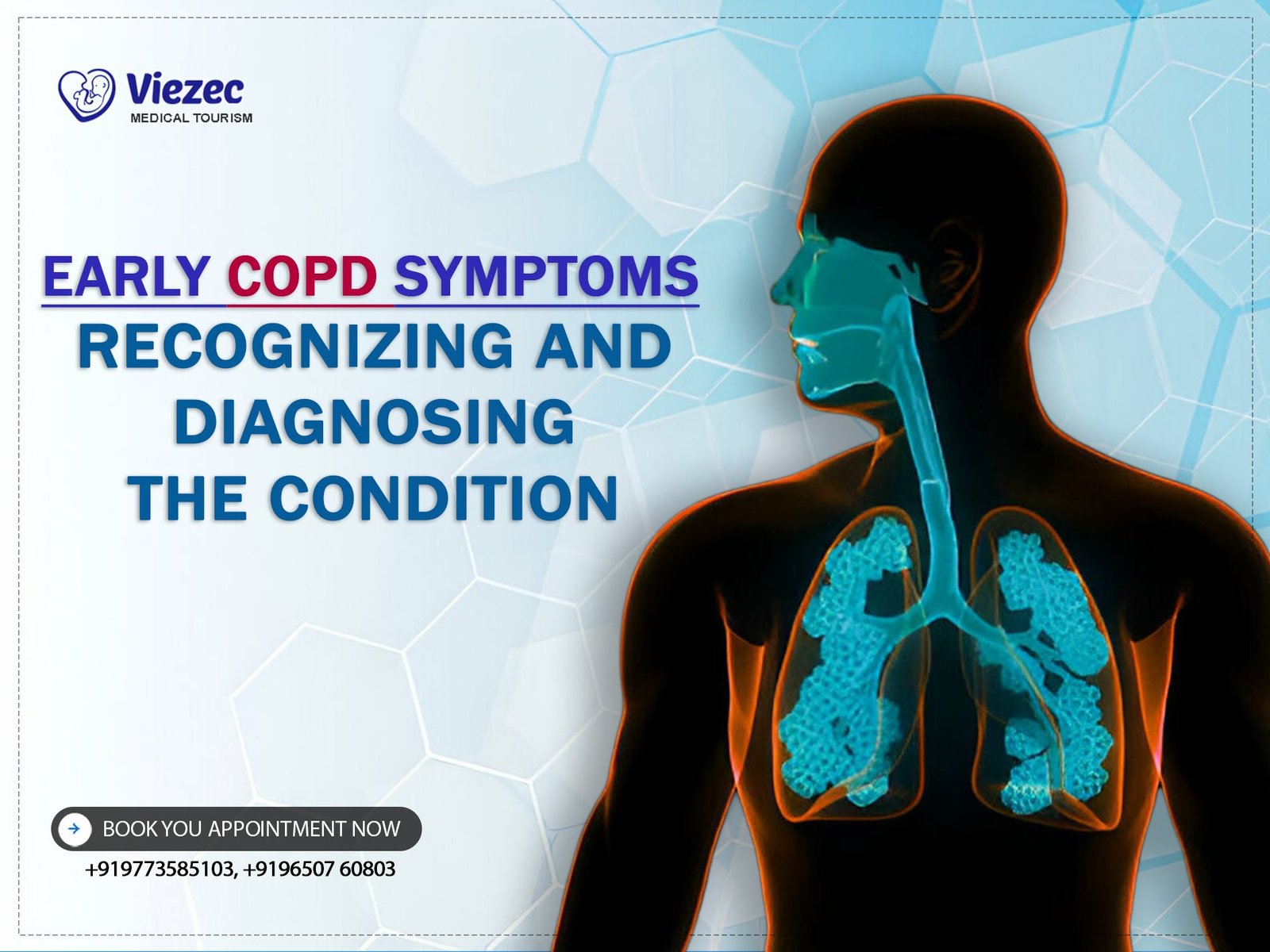Chronic Obstructive Pulmonary Disease (COPD) is a progressive lung disease that makes breathing difficult. It encompasses a range of conditions, primarily chronic bronchitis and emphysema. COPD is a leading cause of morbidity and mortality worldwide, with smoking being the primary risk factor. Understanding COPD, its symptoms, diagnosis, and available treatments is crucial for managing the condition effectively.
Understanding COPD
What is COPD?
COPD is characterized by airflow limitation that is not fully reversible. It typically worsens over time and is often associated with exacerbations, leading to increased breathlessness, coughing, and mucus production. The airflow limitation is usually progressive and associated with an abnormal inflammatory response of the lungs to noxious particles or gases.
Risk factors for COPD
The primary risk factor for COPD is tobacco smoking, with other factors including exposure to indoor and outdoor air pollution, occupational dusts and chemicals, and genetic predisposition. Long-term exposure to these irritants leads to inflammation and damage to the airways and alveoli, resulting in the characteristic symptoms of COPD.
Types of COPD
Chronic bronchitis involves inflammation of the bronchial tubes, leading to increased mucus production and coughing. Emphysema, on the other hand, involves damage to the air sacs in the lungs, reducing their elasticity and impairing airflow. Many individuals with COPD have both chronic bronchitis and emphysema to varying degrees.
COPD Symptoms and Diagnosis
Common symptoms of COPD include shortness of breath, chronic cough, sputum production, and wheezing. Diagnosis is based on symptoms, medical history, physical examination, and pulmonary function tests, such as spirometry, which measures how much air you can breathe out and how fast.
Conventional Medications for COPD
Bronchodilators
Bronchodilators are medications that relax the muscles around the airways, making it easier to breathe. They are a cornerstone of COPD treatment and are available in short-acting and long-acting forms.
Short-acting bronchodilators
Short-acting bronchodilators provide quick relief of COPD symptoms but have a relatively short duration of action, typically lasting 4-6 hours. They are often used on an as-needed basis for acute symptom relief.
Long-acting bronchodilators
Long-acting bronchodilators provide sustained bronchodilation over 12-24 hours and are used regularly to prevent symptoms and exacerbations. They are available as beta-agonists or anticholinergics, either alone or in combination.
Inhaled Corticosteroids
Inhaled corticosteroids help reduce airway inflammation and mucus production in COPD. They are often used in combination with long-acting bronchodilators for patients with frequent exacerbations or severe disease.
Combination Medications
Combination medications containing both a long-acting bronchodilator and an inhaled corticosteroid are available for patients who require dual therapy for symptom control.
Oral Medications
Oral medications such as phosphodiesterase-4 inhibitors or theophylline may be prescribed for patients with severe COPD who continue to experience symptoms despite treatment with inhalers.
Antibiotics for COPD Exacerbations
Antibiotics may be prescribed during exacerbations of COPD, particularly if there are signs of bacterial infection. They help reduce inflammation and improve symptoms.
Emerging Therapies and Treatment Innovations
Stem Cell Therapy for COPD
Stem cell therapy involves using stem cells to repair damaged lung tissue and reduce inflammation in COPD. While still experimental, early studies have shown promising results in improving lung function and quality of life.
Gene Therapy and COPD Treatment
Gene therapy aims to correct genetic mutations associated with COPD or enhance the body’s ability to repair damaged lung tissue. Research in this area is ongoing, with the potential for personalized treatments based on individual genetic profiles.
Immunotherapy for COPD
Immunotherapy involves targeting the immune system to reduce inflammation in the lungs and prevent exacerbations. Biologic therapies targeting specific inflammatory pathways are being investigated for their role in treating COPD.
Novel Drug Delivery Systems
Advances in drug delivery systems, such as inhaler devices with improved efficacy and convenience, are helping optimize the delivery of medications to the lungs and improve treatment outcomes for patients with COPD.
Lifestyle Management for COPD
Smoking Cessation Programs
Quitting smoking is the single most important intervention for slowing the progression of COPD and reducing exacerbations. Smoking cessation programs, including behavioral counseling and pharmacotherapy, can greatly improve outcomes for patients with COPD.
Pulmonary Rehabilitation
Pulmonary rehabilitation programs combine exercise training, education, and psychosocial support to improve symptoms, exercise tolerance, and quality of life in patients with COPD.
Oxygen Therapy
Oxygen therapy may be prescribed for patients with severe COPD and low blood oxygen levels, helping improve exercise capacity and relieve symptoms of hypoxemia.
Dietary and Nutritional Recommendations
A healthy diet rich in fruits, vegetables, lean proteins, and whole grains can help support overall health and energy levels in patients with COPD. Nutritional supplementation may be necessary for patients with weight loss or malnutrition.
Exercise and Physical Activity Guidelines
Regular physical activity, tailored to individual abilities and limitations, is important for maintaining muscle strength, cardiovascular health, and functional independence in patients with COPD.
Managing COPD Flare-Ups
Recognizing COPD Exacerbations
COPD exacerbations are characterized by worsening symptoms, such as increased breathlessness, coughing, and sputum production. Early recognition and prompt treatment are essential for minimizing the impact of exacerbations on lung function and quality of life.
Acute Medication Management
Treatment of COPD exacerbations often involves increasing bronchodilator therapy, oral corticosteroids, and antibiotics if indicated. Patients with severe exacerbations may require hospitalization for more intensive treatment.
When to Seek Emergency Care
Patients should seek emergency medical attention if they experience severe shortness of breath, confusion, chest pain, or bluish discoloration of the lips or fingernails, as these may indicate a life-threatening exacerbation.
Preventive Measures for Reducing Exacerbations
Preventive measures such as influenza and pneumococcal vaccination, smoking cessation, and adherence to prescribed medications can help reduce the frequency and severity of COPD exacerbations.
Patient Education and Self-Care Strategies
Patients play a crucial role in managing their COPD. Educating them about the disease and empowering them with self-care strategies can improve their quality of life and reduce exacerbations.
Inhaler Techniques and Proper Usage
Inhalers are the cornerstone of COPD treatment, delivering medication directly to the lungs. However, improper inhaler technique is common and can lead to ineffective treatment. Patients must learn correct inhaler usage to optimize medication delivery and symptom control.
COPD Action Plans
Creating a personalized COPD action plan with healthcare providers helps patients recognize worsening symptoms early and know when to seek medical attention. These plans outline steps to take during exacerbations, such as adjusting medication dosages or seeking emergency care.
Monitoring Lung Function at Home
Regular monitoring of lung function at home using peak flow meters or portable spirometers allows patients to track their disease progression and response to treatment. This self-monitoring empowers patients to take proactive measures in managing their COPD.
Psychosocial Support and Coping Strategies
Living with COPD can be challenging, both physically and emotionally. Psychosocial support, including counseling and support groups, can help patients cope with anxiety, depression, and the social impact of their condition. Developing coping strategies, such as mindfulness and relaxation techniques, can also improve overall well-being.
Complementary and Alternative Therapies
In addition to conventional treatments, some COPD patients explore complementary and alternative therapies to alleviate symptoms and improve quality of life.
Acupuncture and Acupressure
Acupuncture and acupressure are traditional Chinese medicine practices that involve stimulating specific points on the body to promote healing and relieve symptoms. While research on their effectiveness in COPD is limited, some patients report symptom relief and improved breathing with these therapies.
Herbal Remedies for COPD Symptom Management
Certain herbs and botanical supplements, such as ginseng and eucalyptus, are believed to have anti-inflammatory and bronchodilator properties that may benefit COPD patients. However, it’s essential to use caution with herbal remedies, as they can interact with prescribed medications and may not be suitable for everyone.
Breathing Exercises (Pursed Lip Breathing, Diaphragmatic Breathing)
Breathing exercises are a cornerstone of pulmonary rehabilitation for COPD patients. Techniques like pursed lip breathing and diaphragmatic breathing help improve lung function, reduce shortness of breath, and enhance overall respiratory muscle strength and endurance.
Managing Coexisting Conditions in COPD Patients
COPD often coexists with other chronic conditions, such as cardiovascular disease, diabetes, and mental health disorders. Managing these comorbidities is essential for optimizing COPD treatment outcomes.
Cardiovascular Disease Management
Cardiovascular disease, including hypertension and coronary artery disease, is common in COPD patients and significantly impacts their prognosis. Managing cardiovascular risk factors, such as smoking cessation, blood pressure control, and cholesterol management, is crucial for reducing cardiovascular complications in COPD.
Diabetes Management
COPD patients have an increased risk of developing diabetes, and poorly controlled diabetes can worsen COPD symptoms and outcomes. Managing blood sugar levels through diet, exercise, and medication is essential for minimizing diabetes-related complications and optimizing COPD management.
Depression and Anxiety Management
Depression and anxiety are prevalent among COPD patients and can adversely affect their quality of life and treatment adherence. Screening for mental health disorders and providing appropriate interventions, such as therapy and medication, can help alleviate symptoms and improve overall well-being.
Cost Considerations and Access to COPD Medications
Access to affordable COPD medications is crucial for ensuring optimal treatment outcomes and reducing healthcare disparities. Understanding cost considerations and available resources can help patients navigate the financial aspects of COPD management.
Insurance Coverage for COPD Treatments
Many COPD medications, including inhalers and oral medications, can be expensive, making insurance coverage vital for patients. Understanding insurance benefits, such as prescription drug coverage and copay assistance programs, can help alleviate the financial burden of COPD treatment.
Patient Assistance Programs
Pharmaceutical companies often offer patient assistance programs that provide free or discounted medications to eligible individuals who cannot afford them. These programs can be invaluable for uninsured or underinsured COPD patients struggling to afford their medications.
Generic vs. Brand Name Medications
In some cases, generic versions of COPD medications may be available at a lower cost than brand-name counterparts. While generic medications are generally considered equally effective, patients should consult their healthcare providers before switching to ensure they receive appropriate treatment.
Future Directions in COPD Treatment
Advancements in COPD research offer hope for improved treatment strategies and better outcomes for patients in the future.
Research Advances in COPD Therapy
Ongoing research efforts aim to identify novel therapeutic targets and develop innovative treatments for COPD. From anti-inflammatory agents to stem cell therapy, emerging therapies hold promise for slowing disease progression and improving lung function in COPD patients.
Potential Breakthroughs in COPD Treatment
Advances in technology, such as targeted drug delivery systems and precision medicine approaches, offer exciting possibilities for personalized COPD treatment. These breakthroughs have the potential to revolutionize COPD management by tailoring therapies to individual patients’ needs and characteristics.
Personalized Medicine Approaches for COPD
Personalized medicine, also known as precision medicine, involves tailoring treatment strategies to patients’ unique genetic makeup, biomarker profiles, and clinical characteristics. By identifying subtypes of COPD and matching patients with the most effective treatments, personalized medicine holds promise for optimizing outcomes and reducing treatment-related adverse effects.
FAQs
Can COPD be cured?
While there is currently no cure for COPD, proper management can help control symptoms, slow disease progression, and improve quality of life. Quitting smoking, adhering to medication regimens, and participating in pulmonary rehabilitation programs are essential components of COPD management.
What are the main types of COPD medications?
The main types of COPD medications include bronchodilators (such as beta-agonists and anticholinergics) to relax airway muscles and corticosteroids to reduce airway inflammation. Combination inhalers containing both bronchodilators and corticosteroids are also commonly prescribed for COPD.
How can I find support for managing COPD?
Support groups, online forums, and patient advocacy organizations can provide valuable support and information for individuals living with COPD. Healthcare providers, including pulmonologists and respiratory therapists, can also offer guidance and resources for managing COPD effectively.








